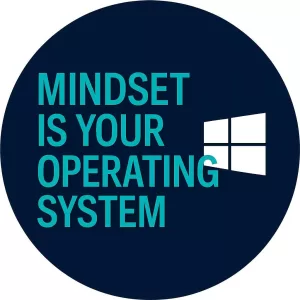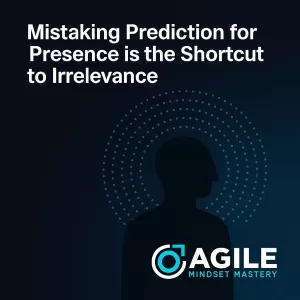Daily Lens: Why are CEOs leaving?
CEO's leaving the tech sector increases 50%. Exits aren't the problem, they're the signal
Share this article:

The wave of sudden CEO exits is rolling through Europe’s biggest companies:
- Unilever replaced its CEO just months into a transformation.
- Rio Tinto's top exec departed amid cultural pressure and strategic drift.
- Novo Nordisk, despite booming revenues, is rethinking its leadership stack.
At surface level, these look like individual leadership transitions. But zoom out and a pattern forms.
We’re witnessing a deeper system strain: a loss of synchrony between key parts of the enterprise. Boards and CEOs are caught in a growing rift, often with Ops, Tech, and Product stuck between shifting priorities and unclear trust.
Context Pulse: The CEO Exodus Isn’t a Fluke. It’s a System Signal.
Check out what Forbes say about it.
We’re not just seeing a few high-profile exits. We’re seeing a full-scale retreat.
- In 2024 alone, 2,221 CEOs left their posts. That’s a 16 percent jump over the previous year.
- By January 2025, the pace accelerated again: 222 CEOs resigned in a single month. That’s the highest ever recorded since tracking began.
This isn't limited to listed giants. Private firms are losing top leaders too, often pulling from public-company ranks in search of resilience and reinvention.
But why now?
Because the role itself is being reshaped and many aren’t prepared to weather the change.
Pressure Stack:
- Economic volatility and geopolitical shocks have turned decision-making into a tightrope act.
- CEOs are burning out at record pace emotionally, politically, and operationally.
- Expectations are shifting: it’s no longer enough to be financially competent. Leaders must now embody empathy, agility, social stewardship, and system fluency simultaneously.
Identity Drift:
- Some leaders are stepping down to seek roles more aligned with their values.
- Others cite misalignment with boards or investor priorities.
- And across the board, succession pipelines are strained. Fewer executives are willing to inherit the weight without clarity, backing, or renewal.
This isn’t a talent crisis. It’s a system-wide rhythm collapse.
When roles mutate faster than the structures that support them, even the best leaders lose grip.
F.I.X. Framework Alignment
We can identify that this isn’t a performance problem. It’s a system rhythm problem. A trust and alignment problem.
According to the F.I.X. Framework, sustainable enterprise success requires all levels to be aligned around:
- Focus: What are we really trying to achieve?
- Iterate: Are we learning fast enough to adapt?
- eXpand: Are we enabling growth or containing it out of fear?
Right now, the system looks like this:
Focus fracture:
Boards zero in on risk management, compliance, and ESG optics.
CEOs aim for innovation, growth bets, and navigating disruption.
These are not wrong priorities but they’re misaligned.
Iteration breakdown:
Rather than testing and learning together, each node defends its domain:
- Boards want answers before experimentation.
- CEOs need permission to explore.
- Middle layers get stuck waiting for consensus that never comes.
Expansion collapse:
Growth plans are often scaled back, delayed, or quietly scrapped not because they’re flawed, but because there’s no shared ownership of the risk.
The organisation becomes cautious. Then political. Then frozen.
This is the slow suffocation of enterprise momentum.
System Reframe: Misalignment Isn’t Just a Leadership Problem
It’s tempting to reduce these moments to “poor communication” or “leadership style.”
But the real issue runs deeper:
- The board is wired to protect.
- The CEO is hired to pioneer.
- And the organisation needs both functions to trust each other enough to co-create the path forward.
When those core roles stop trusting, they stop syncing.
We start seeing:
- Strategy decks that get softer with every stakeholder review.
- Product teams guessing at “what leadership wants.”
- Senior hires who play safe, not smart.
- And ultimately, talent leaving not because of one leader, but because the system lost clarity and courage.
Where Is Friction Masquerading as Focus?
Ask yourself:
- Are your executive teams genuinely aligned or just polite?
- Does your board support the how, or only judge the what?
- Are departments shifting resources reactively or in sync with the strategy pulse?
- Is feedback moving across the system or getting filtered through layers of politics?
This is about more than structure.
It’s about strategic rhythm and rhythm only works when each part of the system is both distinct and in tune.
"This is about more than structure. It’s about strategic rhythm and rhythm only works when each part of the system is both distinct and in tune."
John McLaughlan, SAFe Certified trainer
TL;DR
Insight: Most system breakdowns aren’t about capability. They’re about timing, trust, and traction.
Takeaway: Enterprise synergy is not soft. It is the hard edge of survival in a complex system.
"When your safety net becomes a noose, the fall isn’t sudden it’s systematic."
This is exactly the kind of breakdown the F.I.X. Framework warns us about. Systems that silence Insight are always next in line for failure.
What can you do?
Rewire how you lead through the F.I.X. system
If today’s post struck a chord, this diagnostic isn’t optional, it’s overdue. The Enterprise Agility Scorecard is a structured scan across five critical domains where rhythm, trust, and alignment either accelerate your organisation or quietly erode it. It’s not about performance theatre it’s about revealing where friction is hiding and where focus is leaking.
If you're a senior leader navigating pressure from above and below, book a confidential 30-minute session with me. We'll walk through your scan, interpret what it’s telling you, and uncover the systemic leverage points you may be missing.
This isn’t about fixing people. It’s about fixing rhythm. Let’s take the first step.
Book a free 30 minute consultation with Agile Mindset Mastery Founder, John McLaughlan.
Book your complimentary Enterprise Agility ScanRead more blog posts
29 Jul 2025
Mindset Is Your Operating System
Unlock leadership clarity, fix transformation bottlenecks, and overcome decision fatigue with mindset tools, emotional intelligence frameworks, and bias-aware systems—built for agile teams, waterfall programs, and high-pressure business environments.

17 Jul 2025
Why Your Team Isn’t Learning Fast Enough
(And What To Do About It)
You can deliver fast. But can you learn fast enough to keep delivering the right things?
Most teams confuse movement with momentum — speed with sense-making.
18 Jul 2025
Daily Lens: AI vs Human Intelligence
Both Predict - Both Forget - Both Similar - But Different AI is prediction. You are perception. But both forget and humans are better at denying it. Mindset and bias awareness aren’t soft skills. They’re system stabilisers. Keep showing up. That’s the part no machine can do for you.

Get in touch
We want to hear from you
If you're ready to break bias, decode decisions and unlock success, we're here to help. Let's get your transformation journey started!
